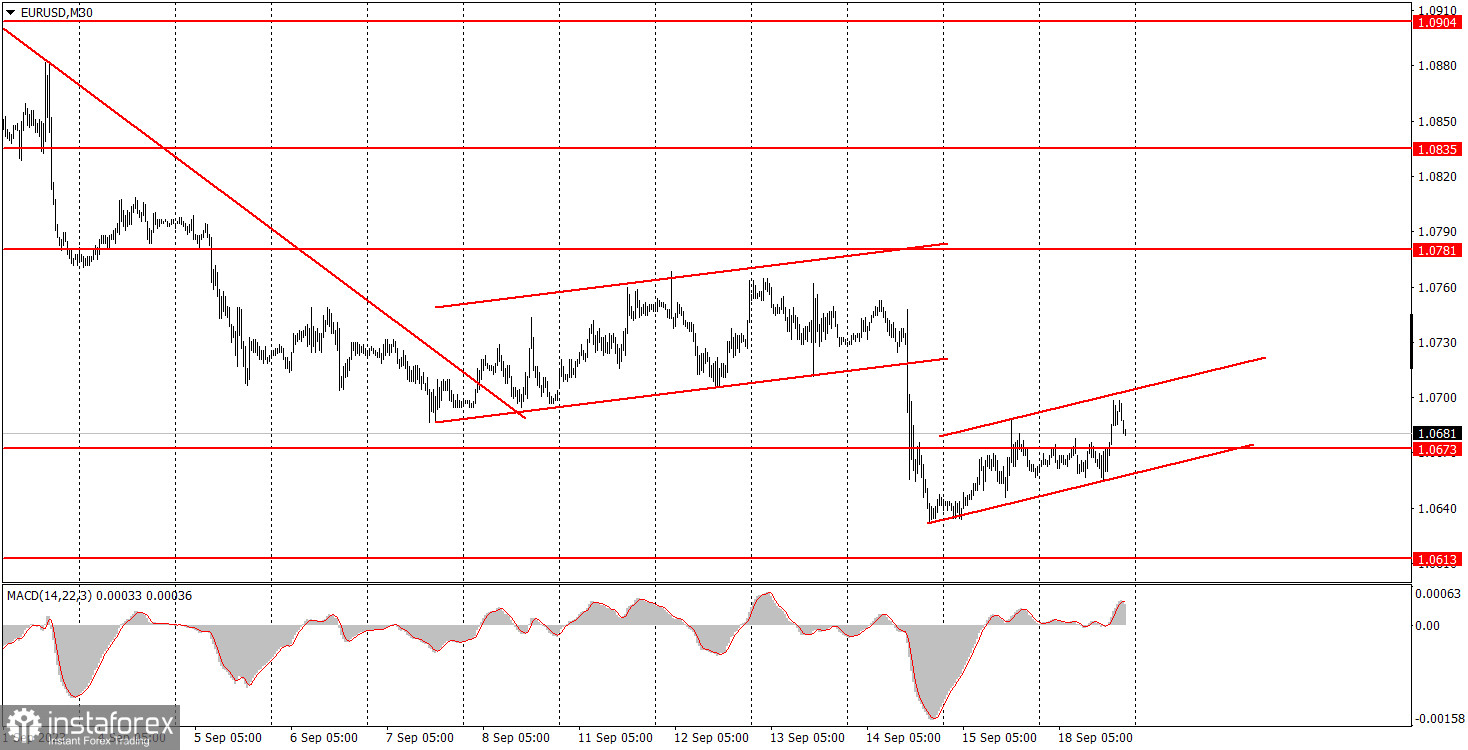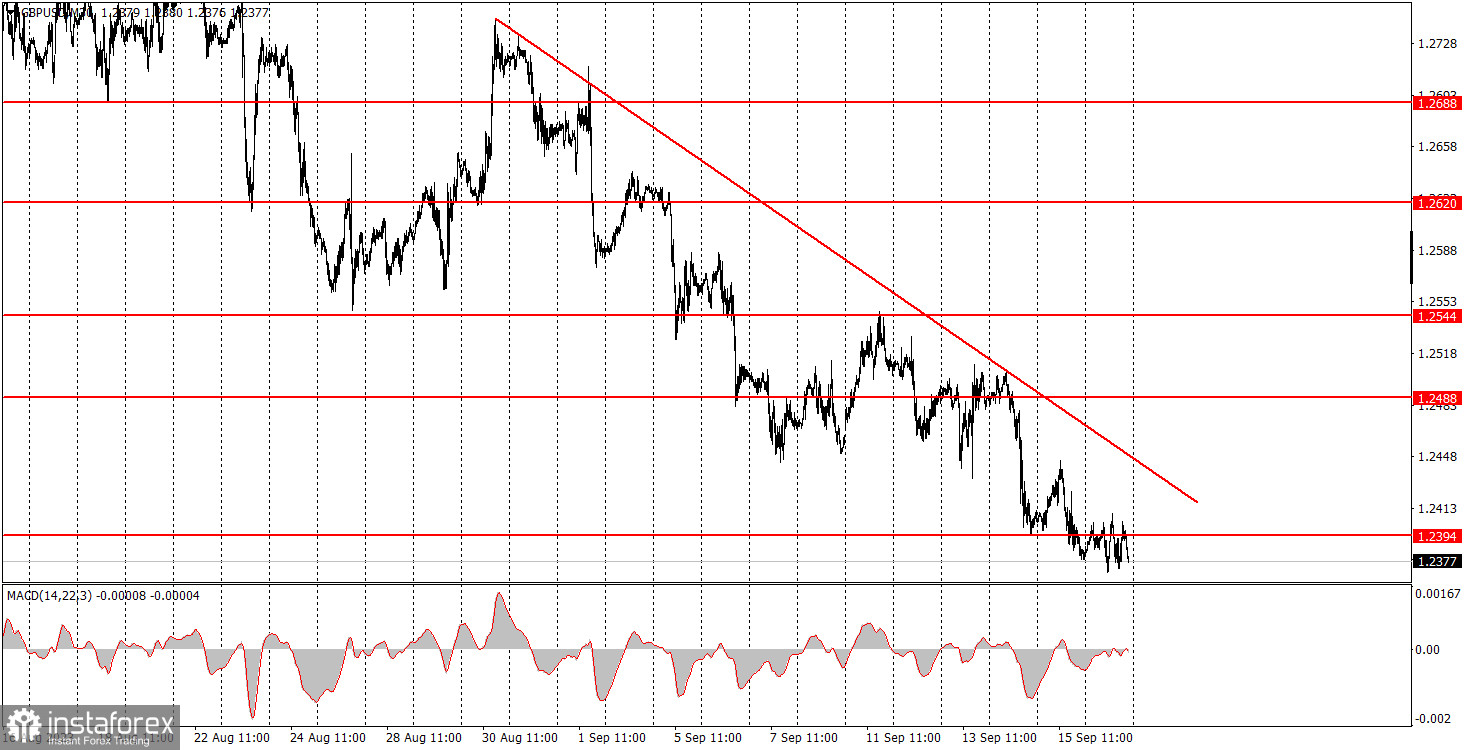Analysis of macroeconomic reports:

For Tuesday, the lineup of macroeconomic events is practically barren, and even fewer of them hold any importance. One might pay attention to the second assessment of August inflation report for the Eurozone. However, the second evaluation rarely deviates from the first, and currently, the inflation metric doesn't carry as much weight as it used to. Previously, it was a cornerstone for each central bank meeting. If inflation rose or fell too slowly, it indicated a more robust and prolonged tightening of monetary policy, which supported the currency. Presently, the ECB, with Christine Lagarde and Luis de Guindos at the helm, communicates clearly to the markets that the rate hike is either concluded or there might be just one more in the offing. Hence, irrespective of the inflation data, the market discerns no 'hawkish' signals from the ECB, nor any substantial reason to buy the euro.
In the US tomorrow, there's the report on building permits issuance. We don't believe that this report has the potential to provoke a market reaction beyond 20-30 points, so there's hardly any merit in keenly watching it.
Analysis of fundamental events:
From Tuesday's fundamental events, only a speech by Elderson from the ECB stands out. Yet, after two speeches by Christine Lagarde, two from Luis de Guindos, and several from their colleagues, everything is crystal clear. The ECB has likely concluded its tightening process in September and now focuses on maintaining the rate at its peak. This week, we might get insights into the Bank of England's similar plan. We posit that such strategies won't provide mid-term support for the euro and the pound. Still, short-term technical corrections are possible.
General conclusion:
Tuesday sees no important events and publications. Therefore, it's going to be yet another dull day, with low volatility and sluggish movements in both pairs.
Basic rules of a trading system:
1) Signal strength is determined by the time taken for its formation (either a bounce or level breach). A shorter formation time indicates a stronger signal.
2) If two or more trades around a certain level are initiated based on false signals, subsequent signals from that level should be disregarded.
3) In a flat market, any currency pair can produce multiple false signals or none at all. In any case, the flat trend is not the best condition for trading.
4) Trading activities are confined between the onset of the European session and mid-way through the U.S. session, post which all open trades should be manually closed.
5) On the 30-minute timeframe, trades based on MACD signals are only advisable amidst substantial volatility and an established trend, confirmed either by a trend line or trend channel.
6) If two levels lie closely together (ranging from 5 to 15 pips apart), they should be considered as a support or resistance zone.
How to read charts:
Support and Resistance price levels can serve as targets when buying or selling. You can place Take Profit levels near them.
Red lines represent channels or trend lines, depicting the current market trend and indicating the preferable trading direction.
The MACD(14,22,3) indicator, encompassing both the histogram and signal line, acts as an auxiliary tool and can also be used as a signal source.
Significant speeches and reports (always noted in the news calendar) can profoundly influence the price dynamics. Hence, trading during their release calls for heightened caution. It may be reasonable to exit the market to prevent abrupt price reversals against the prevailing trend.
Beginning traders should always remember that not every trade will yield profit. Establishing a clear strategy coupled with sound money management is the cornerstone of sustained trading success.
 English
English 
 Русский
Русский Bahasa Indonesia
Bahasa Indonesia Bahasa Malay
Bahasa Malay ไทย
ไทย Español
Español Deutsch
Deutsch Български
Български Français
Français Tiếng Việt
Tiếng Việt 中文
中文 বাংলা
বাংলা हिन्दी
हिन्दी Čeština
Čeština Українська
Українська Română
Română


